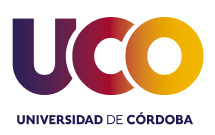Determination of bacterial vesicles interactions in the most abundant marine cyanobacteria and its potential applications (H2020-MSCA-IF-2018-844891).
Prochlorococcus and Synechococcus are important contributors of global primary production in the ocean, as they are responsible for a significant fraction of carbon fixation in aquatic habitats. Moreover, these cyanobacteria together with other marine phototrophic microorganisms (diatoms and pico-and nanophytoplankton) are responsible for more than 50% of the oxygen production on Earth, highlighting the importance of these marine microorganisms.
In 2014, Steve Biller and Sallie Chisholm’s research team at the Massachusetts Institute of Technology (also known as MIT) discovered that marine cyanobacteria release vesicles or little “bags” that contain proteins, lipids and organic compounds, among other things, into the sea. Despite the interesting findings showing the versatile nature of Synechococcus, no study has explored the content and the possibility that vesicles in Synechococcus might provide gene transfer and/or protein/metabolite transfer between different bacteria. Moreover, the mechanism through which these DNA fragments, proteins or metabolites are first generated and then integrated into membrane vesicles needs to be considered. Finally, the content of bioactive compounds in vesicle of Synechococcus has not being studied yet, and could provide a source of novel compounds with potential activity. This gap in the knowledge of vesicles in phototrophs makes the VESYNECH project promising in terms of providing innovative and exciting results.
General objectives
The overarching goal of this project is to gain insight into the ecology and function of the membrane vesicles of the most abundant phototrophic cyanobacteria Synechococcus. One of the aims of VESYNECH is to understand the mechanism by which marine cyanobacteria release these small “packets” of genetic information and organic compounds. In the two years that the project will last for, they will study whether the secretion of these vesicles happens on a regular basis or if they are prompted by stimuli. Specific objectives of the project:
- Objective 1: To characterize the variety and composition of vesicles present in cultures of Synechococcus in response to stress.
- Objective 2: To identify the possible role of the Synechococcus vesicles in HGT.
- Objective 3: To explore possible changes in the transcriptome of the marine Synechococcus sp. PCC 7002 under the presence of vesicles of Synechococcus sp. WH 8102.
Role of the University of Cordoba
Project VESYNECH was born, led by the «Adaptations to nitrogen and carbon metabolism in Prochlorococcus and Synechococcus, BIO123» research group, a group with vast experience studying these marine microorganisms in the Biochemistry and Molecular Biology Department at the University of Córdoba. All the objectives will be carried out by Dr. Muñoz-Marín during the two years of project.
In order to count and measure the size of these nanoparticles, they have Professor Francisco J. Romero Salguero from the Research Institute on Fine Chemistry and Nanochemistry (abbreviated to IUNAM in Spanish) at the University of Cordoba as a collaborator.
Supervisor: José Manuel García Fernández e-mail: jmgarcia@uco.es
Investigadora Principal: María del Carmen Muñoz Marín e-mail: b32mumam@uco.es
Página web del proyecto: http://www.uco.es/investigacion/proyectos/capitanavesy/index.php/es/

